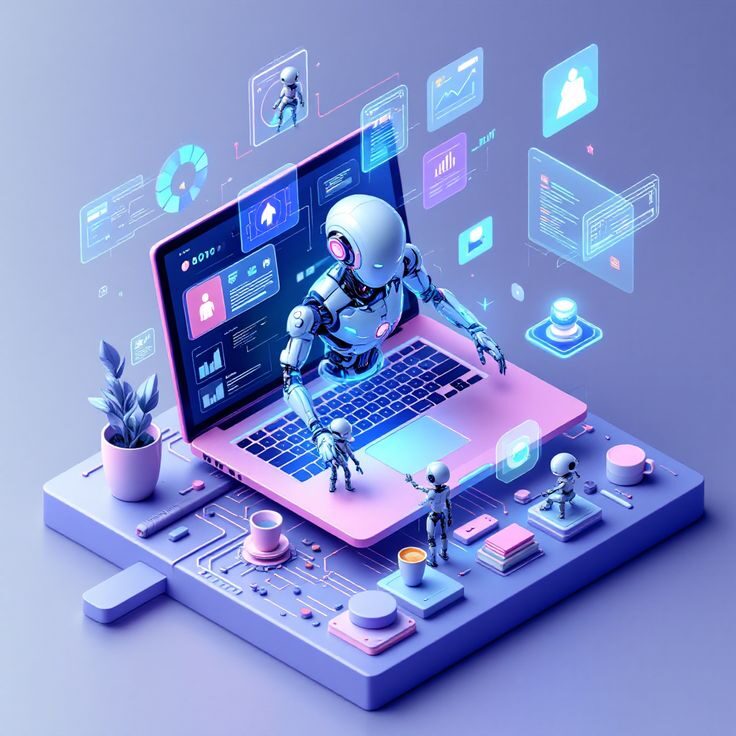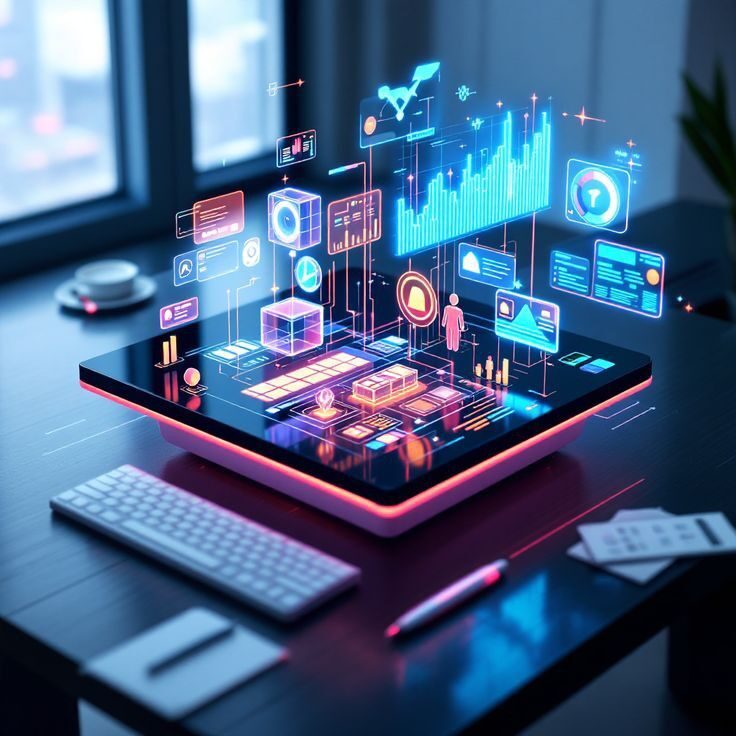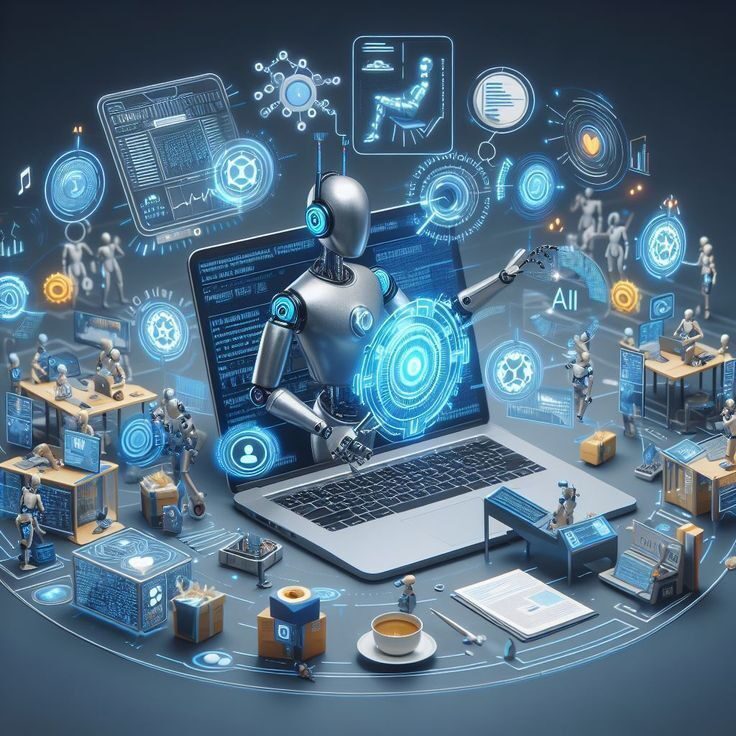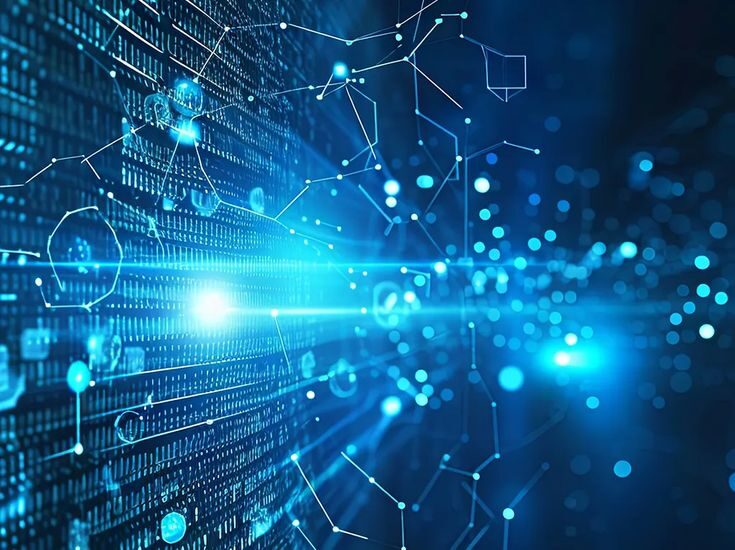The web design landscape has evolved dramatically over the past decade. With the rise of AI, machine learning, and automated tools, building websites is no longer a task reserved solely for skilled developers and designers. Today, Automated Web Design platforms are making it easier and faster to create professional-looking websites without writing a single line of code.
But this technological leap raises an important question: Will human designers still be needed in 2025? In this article, we’ll explore the current state of automated web design, its benefits, limitations, and the future role of human creativity in a rapidly evolving digital world.

Automated Web Design: Will Humans Still Be Needed in 2025?
What is Automated Web Design?
Automated Web Design refers to the use of artificial intelligence (AI) and machine learning to build websites with minimal or no human intervention. These systems analyze user preferences, business goals, content, and design best practices to generate websites in minutes.
Popular platforms like Wix ADI, Bookmark’s AIDA, and Zyro AI are already leading the charge. These tools ask a few questions about your business or project and then generate a custom-designed website based on that input.
Key Features of Automated Web Design:
AI-powered layout and color schemes
Content generation tools
Image optimization
SEO suggestions
Drag-and-drop customization
Integration with third-party apps
The Benefits of Automated Web Design
The adoption of automated web design has been swift—and for good reason. Here are some of the biggest advantages it offers:
1. Speed and Efficiency
Traditional web design projects can take weeks or even months. In contrast, automated tools can build a functioning site in under an hour. This is ideal for startups, small businesses, or individuals who need an online presence quickly.
2. Cost-Effective
Hiring a professional designer or agency can be expensive. Automated platforms offer subscription-based models that are much more affordable, making them accessible to people with limited budgets.
3. No Coding Required
For non-technical users, Automated Web Design eliminates the need to learn HTML, CSS, or JavaScript. Everything is done through an intuitive interface, making website creation more inclusive.
4. AI-Based Optimization
Many automated systems are equipped with built-in SEO tools. They suggest keyword usage, optimize images for faster loading, and structure content to improve search engine rankings.

The Limitations of Automated Web Design
Despite its many benefits, Automated Web Design has limitations especially when it comes to customization, branding, and complex functionality.
1. Limited Creative Freedom
AI-driven tools work best within predefined templates and algorithms. While they can produce attractive layouts, they often lack the originality and artistic flair that human designers bring to the table.
2. Generic Designs
Since many users are working with the same templates and automation engines, websites can start to look similar. This lack of uniqueness can hurt a brand trying to stand out in a competitive market.
3. Complex Features Require Human Intervention
If a website requires advanced functionalities like custom databases, unique animations, or integration with specific enterprise systems, automated tools may fall short. In such cases, human developers are still essential.
4. SEO Strategy is Still a Human Skill
While AI can suggest keywords and structure, crafting an effective SEO strategy—including backlinking, content marketing, and user experience—still requires human insight and expertise.

Will Automated Web Design Replace Humans in 2025?
The question remains: Will automated tools completely replace human designers by 2025?
The short answer is no—but the landscape will change.
1. The Role of Designers Will Evolve
Rather than being replaced, web designers will shift into more strategic roles. They will use Automated Web Design tools as part of their workflow, freeing them to focus on branding, storytelling, and user experience.
Designers may increasingly become “design architects” who guide automation engines, rather than creating everything from scratch.
2. Human Creativity Can’t Be Replicated
AI is powerful, but it can’t fully replicate human creativity, emotion, and intuition. Users resonate with websites that tell compelling stories and evoke emotional responses—something machines are not yet equipped to do.
In 2025, human designers will still be needed to inject authenticity and personality into automated designs.
3. Collaboration Between AI and Humans
The future lies in collaboration, not replacement. Imagine a system where AI handles routine tasks—like layout, spacing, and optimization—while designers craft the brand voice, visuals, and customer journey.
This hybrid model maximizes efficiency while preserving creativity.

Industries That Will Still Rely on Human Designers
Certain industries will continue to demand a high level of human creativity and customization:
1. Luxury and Fashion Brands
Luxury brands need bespoke designs that reflect their unique identity. Templated layouts from automated platforms often fall short of delivering the exclusivity these brands require.
2. Creative Agencies
Agencies offering full-service marketing and branding will always rely on human designers to create cohesive experiences across digital and offline channels.
3. Tech Startups
Startups with unique product offerings often require tailored UI/UX design and custom development, which automated systems cannot yet provide effectively.
Skills Web Designers Should Learn to Stay Relevant
To thrive in the era of Automated Web Design, professionals need to adapt and upskill. Here are some essential skills for the future:
1. UX and UI Design
Understanding user psychology and creating intuitive interfaces will always be in demand. These skills are less about aesthetics and more about solving problems.
2. Brand Strategy
Web designers with branding expertise can help clients establish a consistent visual identity, tone, and narrative—something no AI can fully automate.
3. Data Analysis
Learning to analyze user behavior and website performance will help designers create data-driven designs that deliver better results.
4. Content Strategy
Designers who understand content strategy and SEO will be better equipped to build websites that not only look good but also perform well on search engines.

The Ethical Side of Automated Web Design
Automation also raises questions about ethics and employment. As tools get smarter, some entry-level design jobs may disappear. However, new opportunities will emerge in AI training, tool development, and strategic design consulting.
Design communities, educational institutions, and businesses will need to collaborate to ensure a smooth transition that benefits both creators and consumers.
Frequently Asked Questions
Q1: How can we ensure AI-generated designs don’t lead to a homogenization of web aesthetics and a loss of truly innovative, human-centric design, given AI’s reliance on existing data?
A1: (Problem-Solving Focus: Fostering Creative Uniqueness) While AI’s training data can indeed lead to pattern replication, the solution lies in sophisticated human oversight and strategic prompt engineering.
- Curated Data Sets & Style Guides: Instead of generic web data, human designers will increasingly curate highly specific and diverse datasets for AI training, reflecting emerging trends, niche aesthetics, and experimental styles. This “designer-as-curator” role ensures AI learns from a richer, more varied palette.
- “Negative Prompting” & Constraint-Based Design: Advanced prompt engineering will involve not just telling the AI what to do, but also what not to do. Designers can set parameters to avoid common tropes, enforce unique stylistic rules, or even introduce deliberate “imperfections” for a more organic feel.
- Hybrid Workflow for Iterative Refinement: The human role shifts from initial creation to intelligent refinement. AI generates numerous concepts, and the designer’s expertise lies in discerning truly innovative outputs, combining elements, and applying nuanced adjustments that AI alone might miss. This iterative loop, where human feedback continually informs AI learning, is crucial.
- Focus on Experiential Design: Humans will increasingly specialize in the emotional and psychological aspects of user experience, leveraging AI for the mechanics. This includes crafting compelling narratives, designing for specific emotional responses, and ensuring cultural relevance – areas where AI still lacks genuine empathy and contextual understanding.
Q2: With AI automating more of the technical aspects (coding, optimization, testing), what new skill sets are paramount for human web designers to remain indispensable and add unique value in 2025?
A2: (Problem-Solving Focus: Upskilling and Role Evolution) The shift demands a profound evolution of the web designer’s skillset:
- AI Orchestration & Prompt Engineering: Understanding how to effectively communicate with and direct AI tools (e.g., generative design AI, content AI, SEO AI) through precise and strategic prompts. This involves a deep understanding of AI’s capabilities and limitations.
- Data-Driven Design Interpretation: Moving beyond basic analytics to interpret complex AI-generated user behavior data and predictive insights. This allows designers to make informed strategic decisions about personalization, conversion optimization, and user journey enhancements that AI might present as raw data.
- Ethical AI Design & Bias Mitigation: Critically evaluating AI’s outputs for inherent biases (e.g., in design layouts, content suggestions, accessibility assumptions) and actively working to mitigate them. This requires a strong ethical framework and understanding of fair design principles.
- Complex Problem Solving & Strategic Vision: AI excels at execution; humans will focus on defining the right problems to solve and crafting the overarching strategic vision. This includes understanding business objectives, market dynamics, and long-term user needs, then translating those into actionable AI directives.
- Interdisciplinary Collaboration: Web designers will increasingly collaborate not just with developers, but also with AI/ML engineers, data scientists, and ethicists, requiring strong communication and collaboration skills to bridge technical and creative domains.

Final Thoughts
Automated Web Design is changing how websites are built. In 2025, businesses will still need human insight to craft memorable digital experiences. By embracing collaboration between humans and AI, we can create websites that are not only functional—but also meaningful.
Whether you’re a business owner, a developer, or a designer—this is the time to adapt, upskill, and innovate. The future of web design is automated, but it’s still beautifully human.
If you want expert guidance, strategy, and execution that delivers real results—reach out to the professionals at Urban Dive Marketing (UDM) and you can also contact us on whatsapp or call us directly 03475159209
We hope you got a good amount of information by reading this article do not forget to give us feedback.



